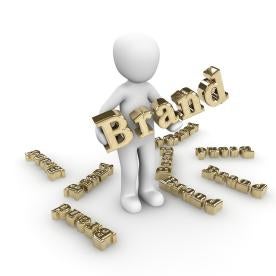With the proliferation of new products, websites and mobile apps in our accelerated economy, creating a unique, compelling brand is not easy. A marketing department may work tirelessly to originate a brand that has the proper punch, only to have the lawyers say “it’s taken” (someone has already registered it as a trademark). And as more companies think “internationally,” more seek global brand protection, further increasing the pool of possible conflicts.
There are twice as many trademarks registered with the U.S. Patent and Trademark Office today as there were twenty years ago. Even in niche markets, companies are getting savvier about trademark protection. For example, there are over 20,000 active trademarks registered just for wine. In pharmaceuticals, where U.S. FDA rules (and similar rules abroad) seek to prevent prescription errors and consumer confusion, it is tougher still to find an available trademark. Add to that the scarcity of available dot-com internet addresses, and coming up with an original, available trademark that can also provide the basis of a web presence seems well-nigh impossible.
What insight can a trademark lawyer bring to bear? Central to the task is balancing legal considerations with marketing objectives. The degree of legal protection that will be afforded a trademark (or “mark”) depends primarily on how inherently distinctive, or “strong,” it is (or becomes through use and advertising) and on how widely the same or similar marks have been used by others. The stronger a mark, the better it will serve to distinguish its owner’s goods and the easier it will be to protect against infringement. Thus, when selecting a mark, it is wise to devise one that is as distinctive as possible.
In terms of strength and distinctiveness, marks can be seen as falling along a spectrum of four categories, ranging from the most to the least distinctive and protectable: 1) “fanciful” and “arbitrary” marks; 2) “suggestive” marks; 3) “descriptive” marks; and 4) “generic” terms. A “fanciful” mark is a coined term, such as KODAK and XEROX. An “arbitrary” mark is an ordinary word used in an uncommon way, such as APPLE for computers and AMAZON for online sales. Fanciful and arbitrary marks make the strongest trademarks legally, but marketing departments should be prepared to budget more money to build consumer recognition of such brands. A “suggestive” mark is one that suggests desirable qualities that are worth conveying to consumers. Examples of suggestive marks include GREYHOUND, suggesting speed, for bus services, and COPPERTONE, suggesting a copper-toned tan for suntan lotion. “Descriptive” marks are those that describe the qualities of the products for which they are used. For example, SWEET AND CHEWY would be a descriptive mark if used for caramels. BANK OF AMERICA might be considered a geographically-descriptive mark. However, a descriptive mark may be protectable if it has acquired “secondary meaning,” which is achieved as a result of extensive use (as with BANK OF AMERICA) such that the public has come to associate it with a single source of goods or services.
At the far end of the spectrum are generic terms – words that can never function as marks. Generic terms are words that are, or become, the common name for a product or service. Such terms are not protectable at all. To illustrate, no one can prevent a fruit farm from accurately describing its product as an “apple” or a software vendor from calling its product a “computer program.” Terms like escalator, yo-yo and thermos are brands that were, in essence, destroyed by their own success in that they were allowed to become, and are now considered, generic terms.
Of course, before moving forward with any brand launch, you should have a trademark search conducted to help determine how widely similar marks mark have already been used and whether your mark may face obstacles to use or registration at the U.S. Trademark Office or any similar foreign trademark office. But with an informed branding strategy, you can land upon an arbitrary, fanciful or suggestive mark that will stand apart from the millions of other marks and avoid potential legal obstacles.




 i
i


